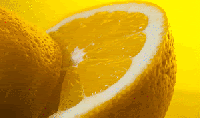Hey guys, I'm sort of new to this forum but I'm loving it already. I was snooping around the Programming Area yesterday and was intrigued by what I saw. I'm just a first year in college planning to major in computer science. I mainly use and know Java as that is what I was taught in high school and currently in college. I've used some C and Python before but I'm not as confident about using them. I've also used some C# in Visual Studio.
I recently started a guide about semi-legit restocking (blocking images with AdBlock). I hear this method has it's dangers and I had an idea for an alternative. Instead of blocking images to indicate junk items, I wanted to change the color of the text for the item name and maybe add another line beneath the cost in the shop that shows the profit as listed on the item database on here. My idea was to make a Greasemonkey userscript for this. It would go through each item in the shop and check it against the database.
The text color for item names would be something like:
Red = negative profit
Orange = <1k profit
Black = <2k profit
Blue = <5k profit
Green = <10k profit
Cyan = <25k profit
Pink = <50k profit
I don't have any JavaScript experience and I'm not sure if this is possible. The way I would check an item on the database would be to take it's name and search it on the database in "quotes" so if it's something like Shampoo it doesn't show all the items with Shampoo in the name. Is it possible for a Greasemonkey userscript to access a webpage like the item database, submit a search, and find an element like the profit value without physically opening a new tab/window?
If anyone would like to help me with this, feel free to let me know. I basically just have this idea but no idea how to implement it. I'm going to start learning JS just to get a feel for it and hopefully make some useful scripts in the future.
Edited by MC10, 22 March 2014 - 11:53 PM.









